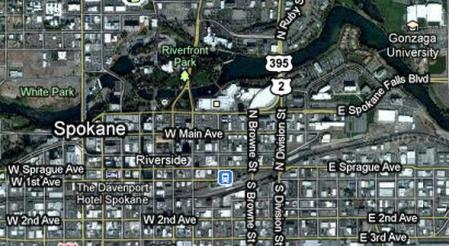S.P. McKelvey & Co was a big player in the sidewalk business of late 19th Century St. Louis. A company he helped run, The St. Louis Flagstone Company, was in the sidewalk business starting in 1882 according to The Industries of St. Louis by J. W. Leonard (1887).
St. Louis Flagstone Company. — H. L. Haydel, Cashier; S. P. McKelvey, Superintendent; Stone Sidewalks; 618 Chestnut street. — This business was established in 1882 and has been conducted with steadily increasing success from that time to the present. The company have been city contractors for paving and flagging for the past three years. They handle every description of stone and have a very large business in laying sidewalks for property owners. About a year ago, Messrs. Haydel and McKelvey bought a half interest in the firm of P. M. Bruner & Co., manufacturers of Granitoid. Up to this writing the firm have made contracts during the present year for laying over 60,000 feet of stone flagging. They possess unsurpassed facilities for carrying on work in their line, and every contract taken by them is executed in a workmanlike manner, and to the entire satisfaction of the customer. Mr. Haydel is treasurer and Mr. McKelvey secretary of the St. Louis Reclining Car Seat Co., and both are gentlemen of superior business attainments, enjoying, in a marked degree, the esteem and confidence of the business community.
In 1890, he started S.P. McKelvey & Company.
From Pen and Sunlight Sketches of Saint Louis: The Commercial Gateway to the South (1892):
The marvelous improvements effected in the manufacture of material for sidewalks, driveways, cellar floors, etc., has effected a complete revolution in the cement trade, and opened up fresh fields of usefulness for its representatives. One of the principal of these in St. Louis, although but recently established, the date being August 1, 1890, is the house of Messrs. S. P. McKelvey & Co., of suite 409, Commercial building. The members of the firm are Messrs. S. P. McKelvey, Frank Sullivan and R. G. Mayhew. Mr. McKelvey is a resident of Chicago, where he is connected with the Granitoid Company of that city. The granite composition stone laid down by this firm is, as its name implies, a mixture of crushed granite with cement, and presents all the desirable features of the solid stone. It is made as required at the scene of operations, and is unrivaled for sidewalks, drives, curbs, gutters, basement floors, brewery and malt house floors, steps, copings, etc., being absolutely impervious to the weather, and as durable as the stone itself. They have just completed a very extensive set of steps for the Grand Avenue Presbyterian Church, containing ten rises twenty-five feet long, with no joints whatever. They are prepared to execute the largest contracts in this useful department of industry with promptitude, and guarantee in every case perfect satisfaction. The house is rapidly acquiring a splendid connection in the city and its environs, and some idea of its rapid development may be obtained from the fact that during the first nine months of 1891, business to the value of $125,000 was transacted. Mr. Sullivan is a native of Ireland, and Mr. Mayhew of Germany, both gentlemen being popular and respected in all circles of the city. Their office is elegant in its appointments and furniture, and has every convenience for the accommodation of customers, such as telephonic communication (call No. 1461) etc. This is a pushing and enterprising house that deservedly merits its success.
The company certainly did fine work, judging from the current state of their surviving sidewalks and by the prevalence of sidewalks that they constructed.
The following is a continued history of S.P. McKelvey & Co through photographs of dated sidewalk markers.
By 1895 the company was called McKelvey, Mayhew and Graham.
Just a year later, Mayhew & Graham were alone but were including the text “Successors to S.P. McKelvey & Co” on their sidewalk markers and in their advertisements.
By 1898 Mayhew and Graham no longer needed the reference.
Frank Sullivan (an original member of S.P. McKelvey & Company) had parted ways at least as early as 1896 (the oldest marker of his that I’ve found), but didn’t stray too far from the format of the marker that had been used at S. P. McKelvey & Co. a decade earlier.
By 1903 Graham was also out on his own.
Graham was in the Granitoid business at least until 1910 (the most recently dated sidewalk marker of his that I’ve found).
It’s amazing to be able to see this history preserved all over the city. As I encounter more of this company’s work, I will post updates here.



































